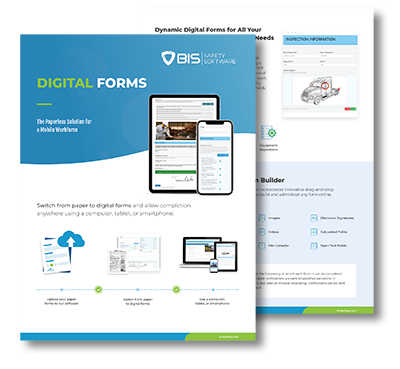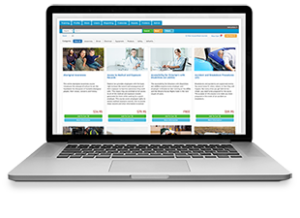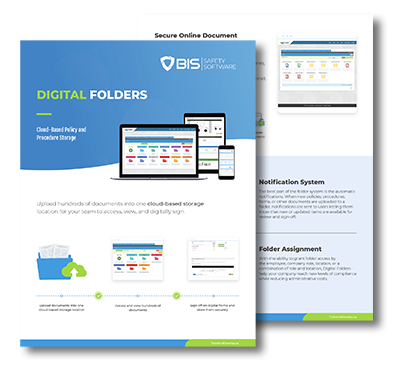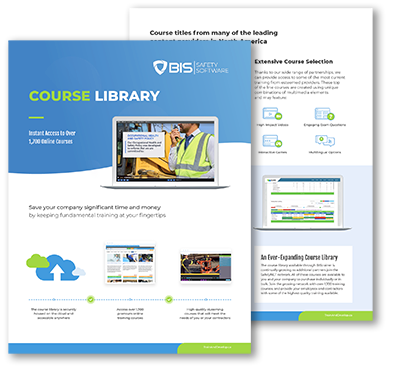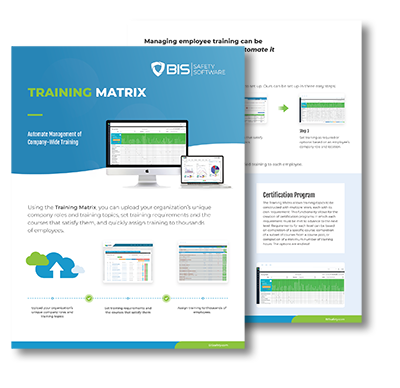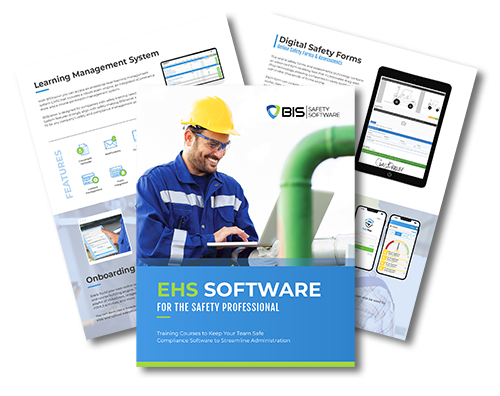BIS Safety Software | How to Choose the Best LMS for Your Business
BIS Safety Software
The LMS Buyer's Guide:
Choosing the BEST Learning Management System (LMS) for your Company
Choosing the best Learning Management System (LMS) can make or break your training programs, employee development, and compliance initiatives. With countless options on the market, selecting the best fit is overwhelming. This guide breaks down critical factors to help you confidently navigate your options and choose a system that truly enhances your organization’s efficiency.
Why is this important? LMS platforms are designed with specific industries in mind—some are ideal for schools, while others are built for corporate training or industries like construction and mining. Choosing a system that doesn’t align with your industry’s needs might still work, but it won’t deliver the best results. The right LMS is one that’s tailored to your business, helping you maximize efficiency and create a more effective training environment.
For Canadian organizations, it’s crucial to ensure the LMS stores data on Canadian servers to
comply with local privacy laws, protecting your business from potential legal risks.
What Should You Look for in a Top lMS?
Critical Elements of an LMS
When choosing an LMS, these are some key elements to ensure a learning management system works for you.

Ease of Use for Industries
An adaptable LMS offers a user-friendly, customizable platform suitable for industries like Energy and Transportation. Its simplicity, paired with robust access controls, lets businesses personalize training solutions while maintaining security and a smooth user experience. This enables effortless integration and effective management of training initiatives across multiple sectors.

Scalability and Flexibility
Designed for growth, a scalable LMS can handle companies of any size, with flexible access management, API integration for user provisioning, and features like audit logs to track activities. This adaptability allows businesses to expand without compromising on performance or security as they grow.
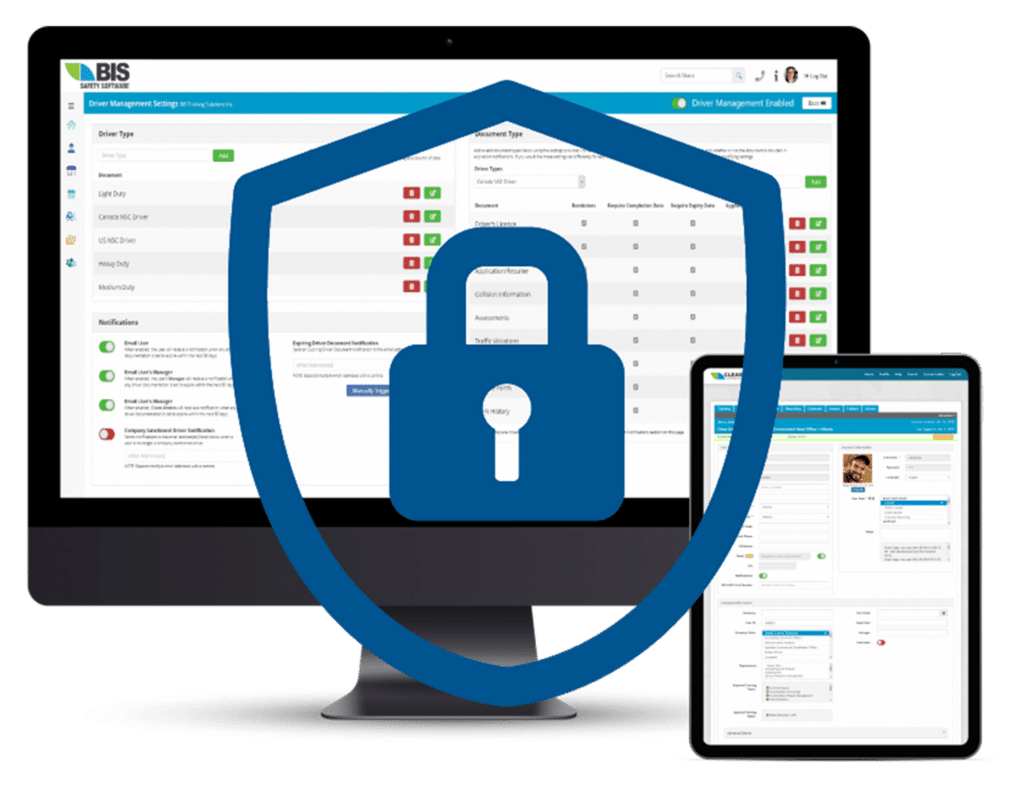
Security and Compliance
A reliable LMS guarantees data protection and compliance with key standards like SOC 2 and GDPR. Opt for systems with encryption for both in transit and at rest, safeguarding sensitive data. Role-based permissions and multi-factor authentication (MFA) further strengthen security by preventing unauthorized access.

Customer Support
A premium LMS offers round-the-clock, proactive customer support for onboarding, issue resolution, and routine maintenance. From monitoring vulnerabilities to managing essential updates, support teams ensure system stability and promptly handle concerns, keeping operations efficient and secure.
Key Considerations for Choosing an LMS
When selecting an LMS, it’s important to evaluate solutions based on your specific needs. Below are the key factors to consider when comparing platforms:
Ease of Use
Your LMS should be intuitive and easy to navigate, both for administrators and users. A complicated system can hinder adoption and decrease engagement.
- ☐ User-Friendly Interface
Ensure the system is easy to navigate for all users.
Tools like customizable dashboards or drag-and-drop interfaces can simplify the user experience.
- ☐ Customizable Dashboards
Personalize views for different roles and departments.
Dashboards can display relevant KPIs, course progress, or assigned tasks based on the user’s role.
- ☐ Mobile Accessibility
Verify LMS access on mobile devices.
Mobile-optimized interfaces or dedicated LMS apps help users access training anywhere.
- ☐ Minimal Training Required
Confirm quick onboarding for new users.
Tools like guided tutorials or built-in walkthroughs help reduce the learning curve for new users.
Integration Capabilities
The LMS you choose should integrate seamlessly with the software your organization already uses—whether it’s HR tools, CRM systems, or compliance software.
- ☐ API Avaliability
Verify the LMS integrates via APIs with HRIS, CRM.
APIs allow for seamless data flow between the LMS and other tools like payroll, HR software (e.g., BambooHR), or CRM systems (e.g., Salesforce).
- ☐ Third-Party Software Compatibility
Check for automated data synchronization across systems.
Integration with systems like Zoom for virtual training, or Google Workspace for document sharing, ensures compatibility.
- ☐ Data Sync Capabilities
Confirm compatibility with compliance tools or other third-party systems.
Automated sync with compliance management tools ensures that data is updated across platforms, such as in compliance reporting systems.
Scalability
As your business grows, your LMS needs to scale with it. Whether you’re adding more employees, locations, or departments, your LMS should accommodate growth without sacrificing performance.
- ☐ Supports Unlimited Users
Ensure the platform can scale with your user base.
A scalable database and cloud infrastructure allow the system to handle large volumes of users without performance degradation.
- ☐ Cloud-Based Hosting
Confirm the LMS uses cloud hosting for scalability.
Cloud solutions like Amazon Web Services (AWS) or Microsoft Azure provide flexible and scalable hosting.
- ☐ Multi-Tenant SaaS
Verify that data is securely segregated for multiple clients or departments.
Multi-tenant platforms allow for segregated databases, ensuring client-specific data security while supporting multiple organizations.
Feature Set
Make sure the LMS offers the features you need, such as course creation, tracking, compliance reporting, certifications, and mobile learning.
- ☐ Course Creation
Verify the ability to create custom courses.
Course authoring tools like SCORM or xAPI-compliant builders allow organizations to create personalized learning experiences.
- ☐ SCORM Compliance
Ensure the LMS supports SCORM standards for content.
SCORM and xAPI compatibility enable easy import of existing eLearning content.
- ☐ Comprehensive Reporting
Check that the system generates detailed reports.
Reporting features should include customizable reports on learner progress, compliance status, and certifications.
- ☐ Compliance Tracking
Ensure it tracks regulatory and compliance needs.
Tracking tools allow for automated alerts and reminders for compliance training, helping meet regulatory requirements like OSHA or GDPR.
Cost and ROI
While price is always a consideration, it’s important to think about the return on investment (ROI) that an LMS can bring. A more expensive system might save you more time and money in the long run.
- ☐ Transparent Pricing
Confirm detailed, transparent pricing models.
Look for clear pricing structures such as subscription models or pay-per-user fees.
- ☐ Time and Cost Savings
Calculate how much time and money automation can save.
Features like automated compliance reminders, digital forms, or exam grading help reduce the manual workload.
- ☐ Automated Reporting
Verify the LMS saves time on manual reporting.
Automated reports for training completion, employee progress, and compliance status save hours on manual tracking.
Customer Support
An LMS is only as good as the support behind it. Make sure your provider offers fast, reliable customer service and onboarding assistance.
- ☐ 24/7 Support Availability
Ensure round-the-clock support is provided.
Chatbots, live chat, or ticketing systems ensure users get help when they need it.
- ☐ Dedicated Onboarding Help
Confirm dedicated help during setup.
Onboarding tools, such as video tutorials or dedicated support agents, can make the implementation process smoother.
- ☐ Self-Help Resources
Verify access to a knowledge base and tutorials.
An extensive knowledge base with FAQs, how-to articles, and video tutorials can empower users to troubleshoot issues on their own.
Security and Compliance
Security should be a top priority, especially if your LMS stores sensitive employee or company data. It should also help you stay compliant with industry standards.
- ☐ Data Encryption (AES 256)
Ensure data is encrypted at rest and in transit.
Encryption protocols like AES 256 ensure data security while being transferred or stored.
- ☐ SOC 2 and GDPR Compliance
Verify compliance with industry standards like SOC 2 and GDPR.
Security certifications, audit logs, and privacy tools help maintain regulatory compliance.
- ☐ Audit Logs
Confirm that all user activities are tracked for compliance.
Audit logs track user activity, such as course completions and data changes, ensuring transparency and accountability.
- ☐ Role-Based Access Control
Check that access is restricted based on user roles.
Role-based access controls allow admin users to assign permissions based on roles, ensuring secure access to sensitive data.
Now that you know what to look for, what are...
The Best Learning Management Systems
Adobe Learning Manager (US): Seamless integration with Adobe Creative Cloud
TalentLMS (US): Ideal for small businesses
BIS Safety Software (Can): Strong in safety compliance and workforce training
Absorb (Can): Great for learning management in classrooms
iSpring (US): Recognized for being a great small starter company option
Docebo (Can): Preferred by large corporations
D2L Brightspace LMS (Can): Popular with educators
Blackboard Learn LMS (US): Favoured by higher education institutions
Canvas LMS (US): Widely used by Ivy League schools
Moodle LMS (Aus): Good for non-profits and is an excellent open-source platform
Let's Take a Closer Look
Absorb
Use Cases
Mid-Market,
Learning,
Key Features
In-House support,
Custom branding,
Integrations
Headless LMS,
Webex/Teams/Zoom,
BIS Safety Software
Use Cases
Key Features
Training Matrix,
Instructor Led Training,
Integrations
Digital Forms,
Advanced Analytics,
Adobe Learning Manager
Use Cases
Key Features
Integrations
Video Conferencing,
iSpring
Use Cases
Compliance
Training,
Key Features
24/7 Support,
SCORM,
Integrations
CRMs,
Video Conferencing,
Wrapping Up
Choosing the right LMS is critical to ensuring your organization’s training, compliance, and onboarding processes run smoothly. A well-designed LMS should offer the tools you need to manage, track, and deliver training effectively, while providing the flexibility to grow with your business. With the right system in place, you can improve efficiency, ensure regulatory compliance, and empower your employees to succeed.





